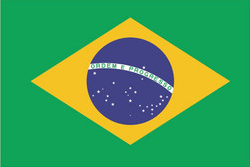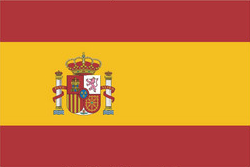 Satellite imagery provider DigitalGlobe Inc said the U.S. government had approved its longstanding request to sell higher-resolution images, a move that could unlock $400 million in additional market opportunities for the company.
Satellite imagery provider DigitalGlobe Inc said the U.S. government had approved its longstanding request to sell higher-resolution images, a move that could unlock $400 million in additional market opportunities for the company.
DigitalGlobe, the only provider of high-resolution commercial satellite images in the United States, has received a license from the U.S. Commerce Department to start selling images with a resolution of 40 cm, up from 50 cm, effective immediately, its Chief Executive Jeffrey Tarr told Reuters.
The Longmont, Colorado-based company will also be able to sell images with a resolution of 25 cm six months after it launches its Worldview 3 satellite around August 13 or 14. That will allow users to go from being able to identify a car to being able to identify its make.
“It means we’ll be able to solve new kinds of problems, and as a result, grow our business,” Tarr said, adding that the approval would allow the company to compete with high-resolution imagery now collected by airplanes, about half of which is taken at a resolution of 30 cm or higher.
The news could bolster the company’s shares, which have jumped since mid-April when the U.S. intelligence community backed the company’s request to sell sharper imagery. Its shares closed at $30.58 on Tuesday, up 17.5 percent from a year low of $26.02 on April 11. Tarr said the decision could also boost the company’s workforce of 1,300, but gave no further details.
DigitalGlobe sells satellite images used by governments and companies such as Google Inc to make maps. It also provides satellite monitoring for mining and oil companies, among others, and detailed analyses of the images it collects. Letitia Long, the head of the U.S. National Geospatial-Intelligence Agency, the company’s biggest single customer, told a conference last month that she expected the government to approve the company’s license request.
She said failure to approve the license could cost U.S. industry its competitive edge given advances by other countries. DigitalGlobe also announced that its Worldview 1 satellite would shift to a different orbit over the next two years so it could collect imagery over the earth in the afternoon hours. The DigitalGlobe satellites already in orbit can capture images with a resolution of 41 cm, but the company has been banned from selling images at that resolution until now.
The new satellite will allow DigitalGlobe to increase that resolution to 31 cm. Satellite imagery collected by Europe’s Airbus has a resolution of 70 cm, Tarr said. The company could further improve the resolution of its imagery by flying its satellites in a lower orbit although it has not announced plans to do so. Using better electro-optical sensors on the new satellite and short wave infrared equipment, Tarr said the company would be able to identify individual trees and plants, and even the moisture content of soil.








